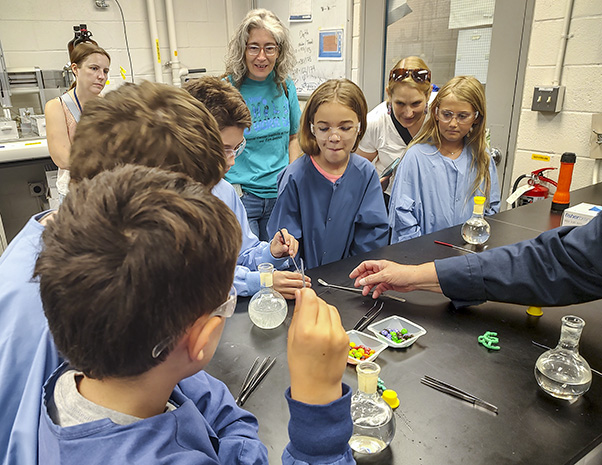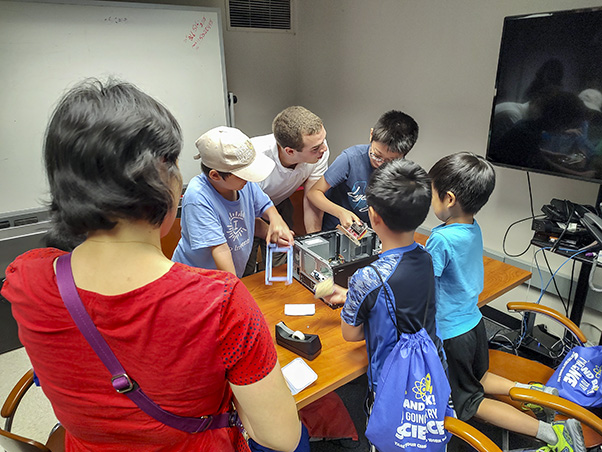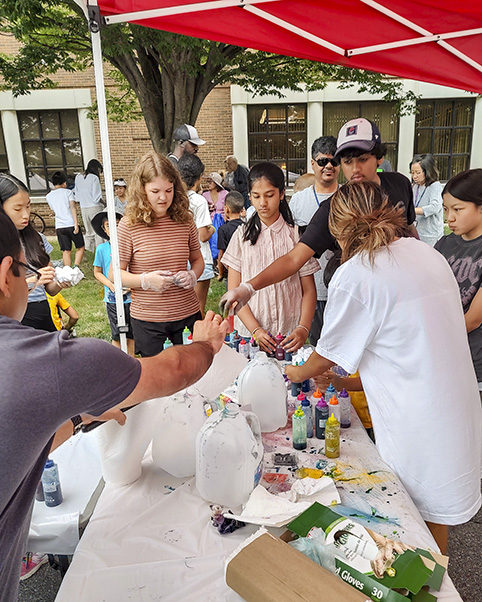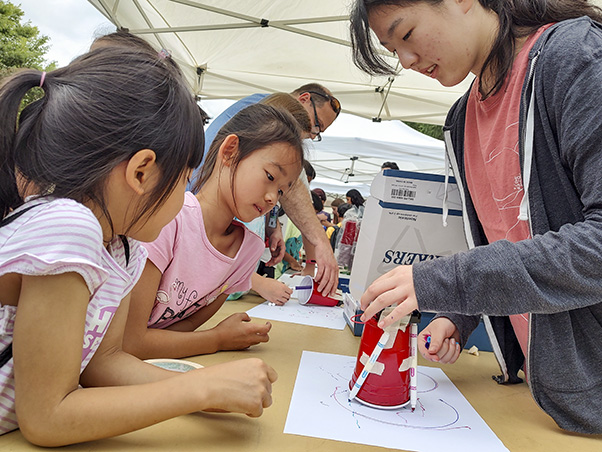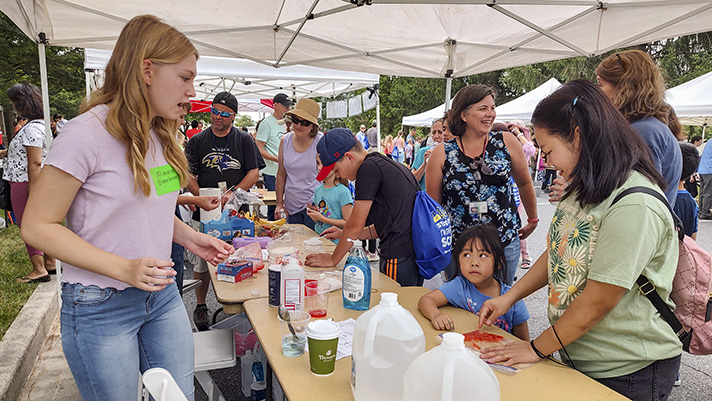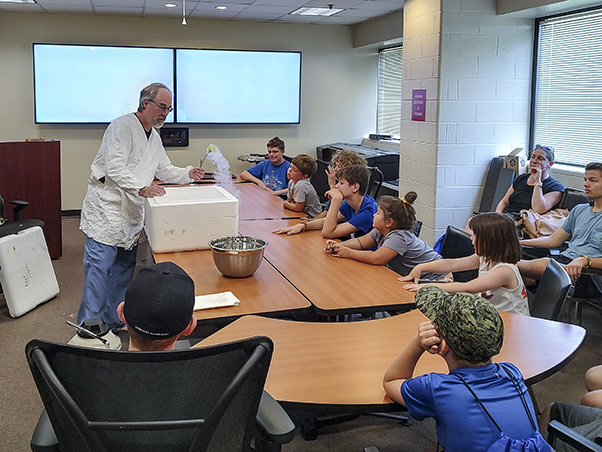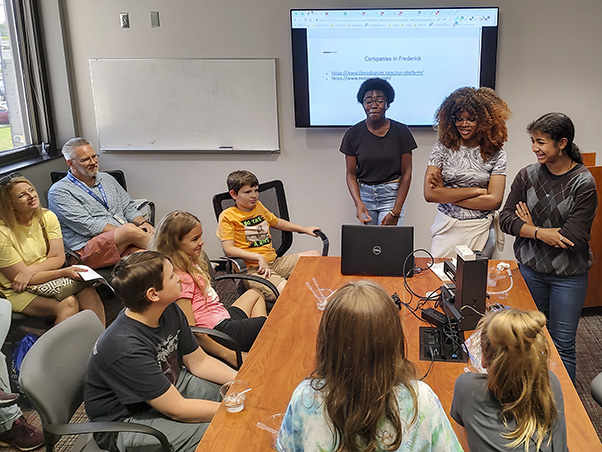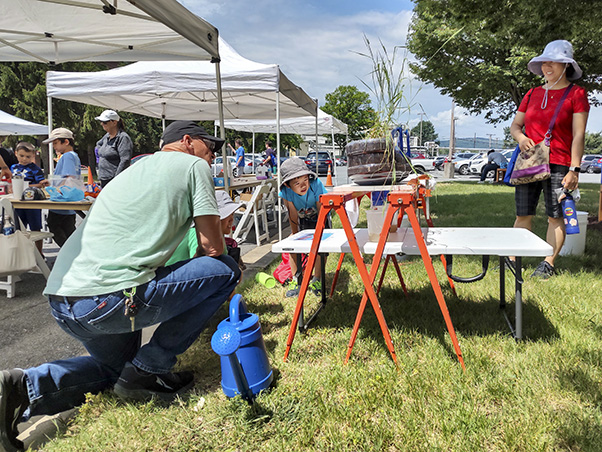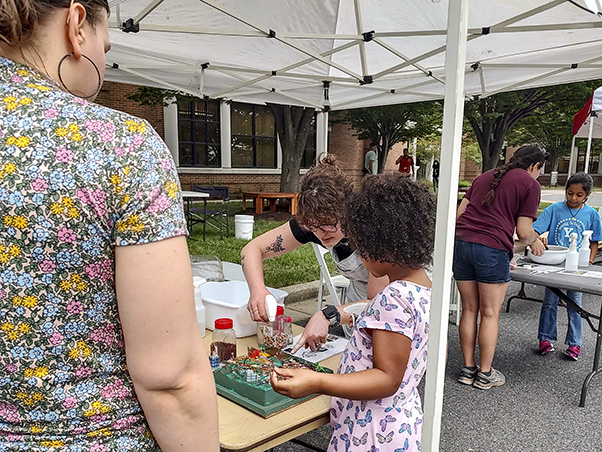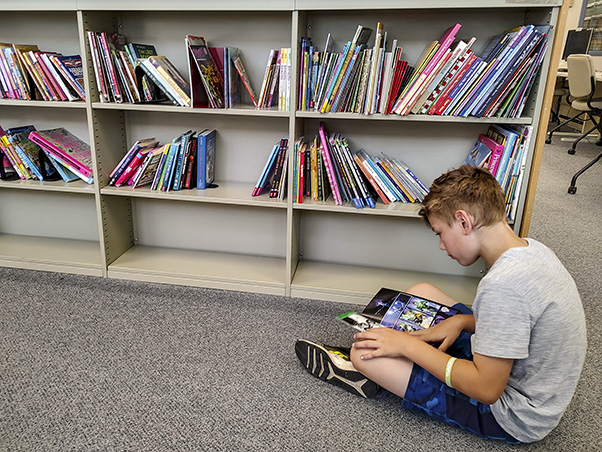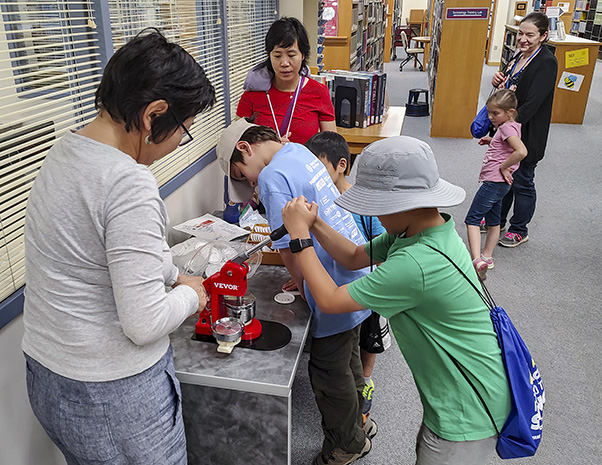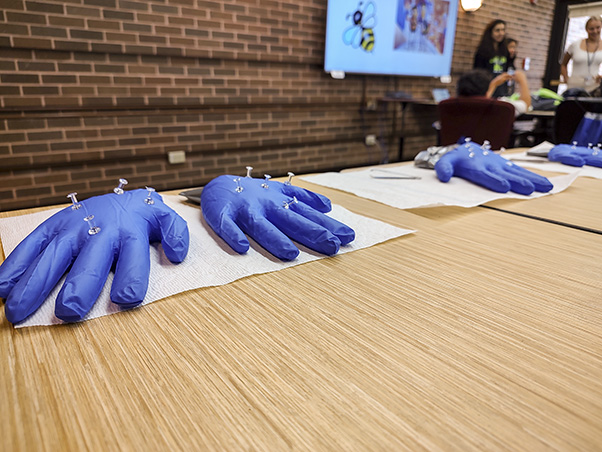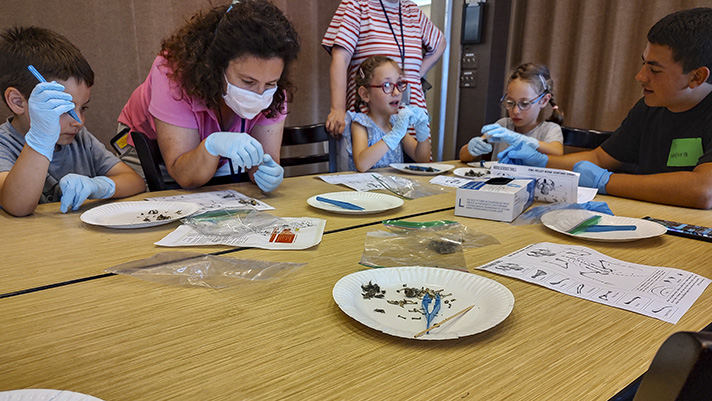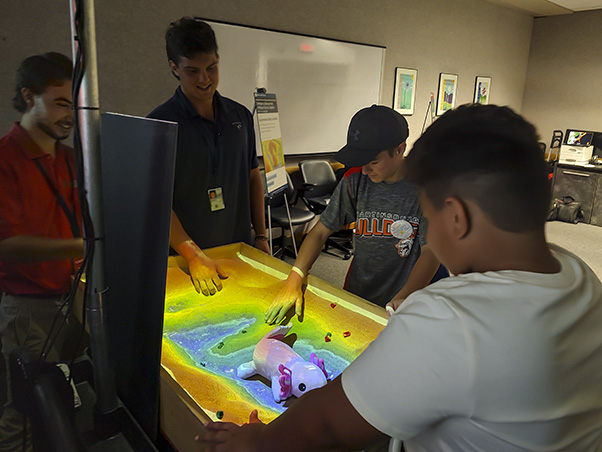In the vermilion-gold light of a humid June morning, groups of visitors fanned out across the NCI Frederick campus. Most weren’t scientists—not yet, at least.
Still, they entered laboratories and work areas, though it quickly became apparent that some were barely tall enough to see over the lab countertops. That didn’t stop them from trying.
To many long-time staff, the familiar scene meant only one thing: after a three-year pause during the pandemic, Take Your Child to Work Day, one of NCI Frederick’s signature summer events, was back.
One group stepped into the Natural Products Branch. There, they suited up in lab coats and safety glasses and, under the instruction of Tanja Grkovic, Ph.D., and Susan Ensel, Ph.D., performed their own “experiments.” (The lab and others had been reviewed and approved for safety prior to the event.) The kids used candy and water to do basic liquid chromatography, then made bursts of crystals appear by applying sodium acetate to flasks of water.
Amid the group’s gasps and exclamations of delight, Grkovic and Ensel explained how the experiments were similar in principle to the lab’s typical procedures. It was all part of the “Drugs from Bugs, Shrubs, and Slugs” program, an inside look at how some medicines come from nature.
The group then visited John Britt and his team in the branch’s automation laboratory. Eager faces watched the automated workstations unscrew vials, move containers with samples, and deposit liquids into well plates. Britt led the group through the lab, pausing to describe the machines’ capabilities and usefulness to research.
“[It] is a chance for us to share our love of science with our children,” he wrote in an email after the event. The best part is “seeing the smiles on the children’s faces during the program.”
A Unique Experience
NCI Frederick’s Take Your Child to Work Day isn’t like the dreaded experience from many a childhood. There’s no quietly doodling on office paper while mom or dad works, no trying to stave off boredom by tossing pencils at the ceiling when no one seems to be looking, no begging, “Can we go home now?” The day is dedicated to giving kids an up-close and hands-on look at science through programs and activities.
“I do like how we got to do experiments, not just sit there and watch people do stuff,” said Lila Metzger, one young participant, adding that the Natural Products Branch’s program was her favorite.
“Mine was the 3D printing, because we got to add these two liquids, and it created this slime, and … it was like a noodle,” said fellow participant Teagan Wise just a moment later.
As the day unfolded, 128 kids and their parents and chaperones joined in 14 programs across campus.
The 3D printing program, held in Building 538, let them combine nonhazardous chemicals to create a polymer gel, the noodle slime Wise mentioned. It was meant to illustrate the concepts behind using 3D printers to create organs for people awaiting transplants. Yet equally illuminating were the kids’ questions: from ideas about printing other biological objects to asking about how to make medical procedures accessible for people of all incomes, everyone was thinking deeply about science.
One door down the hall, the National Institute of Standards and Technology’s Shahram Orandi walked another group through “Fingerprint Analysis 101.” Mixing hands-on demonstrations of fingerprint comparisons with a discussion about the science of fingerprints, Orandi regaled his intrigued audience with facts and real-world stories.
Pilot Year Is Successful
More than 15 other activities made up the downtime between programs. The liquid nitrogen ice cream stand in Building 426 proved to be a hit again this year. The Environment, Health, and Safety Directorate sponsored firefighting and safety activities, including an emergency simulation, in Building 549. Nearby, another activity, the natural hazards sandbox, let kids see how terrain affects flooding. Down the hall, the Scientific Library hosted a book swap and visits from reading and therapy dogs.
“Our volunteers are amazing,” said Tori Seal, the event’s coordinator, in a spare moment as she hustled between her duties. This year was the pilot as NCI Frederick works to resurrect the event, she explained.
Looking out over the crowd, she said, “It’s really a community vibe. People are trying to help where they can, so I think that’s been the most exciting feature, seeing that we have this community culture, and we have the foundation to grow from it.”
The event’s hub area, set up in a block-party fashion outside Building 549, was further evidence of this culture. Volunteers ranging from high school interns to managerial staff led activities in which kids extracted DNA from fruit, made a polymer bouncy ball, and learned about pollution and erosion, to name a few.
“This is an enriching activity to mix things up during the summer,” Rachel Andrews, a research associate and first-time adult chaperone, wrote in an email after the event. “I think it’s a good bonding moment for the kids and parents. Plus, the event could spark a young child’s interest in science!”
Throughout the day, several kids mentioned they attended in the years before the pandemic, and even when they couldn’t remember much about the past events, they remembered enjoying them.
Some, like Metzger and Wise, were even talking about becoming scientists or entering the technology field when they grow up.
The Community at Work As the event wound down, the skies darkened, the wind picked up, and a storm blew in. Gusts toppled a tent in the hub area and threatened to scatter chairs and tables. Parents and children dashed for the shelter of indoor activities, while the remaining volunteers dropped what they were doing and helped Facilities staff secure and take down the remaining booths. In less than 10 minutes, the items were packed, waiting to be loaded onto a truck. Although it was a quick and decisive conclusion to the day, it was also a display of the teamwork driving the event. Or, as Teal would say, “a community vibe.” |
The event organizers are soliciting feedback about this year’s Take Your Child to Work Day. If you participated in the event, you can access the feedback form on cancer.gov.
Samuel Lopez leads the editorial team in Scientific Publications, Graphics & Media (SPGM). He writes for newsletters; informally serves as an institutional historian; and edits scientific manuscripts, corporate documents, and sundry other written media. SPGM is the creative services department and hub for editing, illustration, graphic design, formatting, multimedia, and training in these areas.



